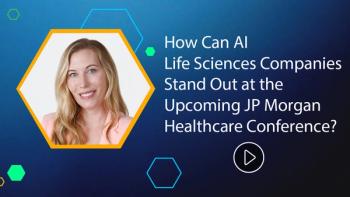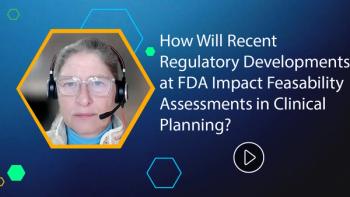
Using OpenAI to Accelerate the Development and Launch of Upcoming mRNA Medicines
In this part of his Pharmaceutical Executive video interview, Brice Challamel, Vice President, AI Products & Platforms, Moderna, talks about how Moderna will leverage its collaboration with OpenAI to accelerate the development and launch of its upcoming mRNA medicines
How will Moderna leverage this collaboration with OpenAI to accelerate the development and launch of its upcoming mRNA medicines?
We have a fantastic two way partnership with open air, I think it's very unique. And I joined Modena from Google. And it wasn't the other side of that conversation as a provider of technology. I've never had that kind of partnership with another company, as I'm having right now, as a customer to open AI. It's incredible. So, I'll give you two concrete examples. Some of those very critical GPT that we're creating, and that we think are going to be decisive in the future of the company. And that are the objects of governance, we have decided, after careful consideration to share them with open AI. And open AI keeps them in their own instance, to prototype their new models against them to make sure that the new model will still behave according to our expectations with our use cases. Until they are at that point, and they feel safe. With RGB Ts, they don't launch. And I don't know that there's any other company that has that level of integration with them. But because we have a year nine, the making of AI agents, and we're being very sophisticated users, and have a diversity of use cases, open, he has found it very useful to have us an GPTs as a continuous standard for the quality of our models before delivering them in their enterprise products. And that, of course makes us feel safer also, because we know that if the model is updated, it is not going to break our GPTs.
And by the way, we hope we're doing that service for the rest of humanity at that point, because the diversity of rgpd doesn't cover every industrial use case in the world. But such a diversity of topics, that we hope that a model that has been able to bridge efficiently from one generation to the next through our RGB T's will have most likely you know, the capability to work with any other GPT out there. So, we're giving that surface to open AI to work. On the other way around. Open AI has come to us with a provision to run business hackathons to redefine our ways of working with AI, thanks to their knowledge, their expertise, working with us on custom models that we could exercise for research, and redefining the way that we interact with each other based on the arrival of this new technology in our way of working. And so having open AI, moderate and lead, hackathons on the way of working in a biotech startup, like ours, is an extraordinary opportunity to learn from the leaders in technology for our needs in life science. And this is the other way of the partnership that we receive a lot from open AI in terms of guidance of, of a philosophy of ai, ai, augmented work. It's a constant source of inspiration for us, we are going to meet a lot of challenges in the future. Our main challenge come from wildlife from the pathogens out there, from cancer, from rare disease from all the burden of disease, and human ailments. In a way, because we are so forward thinking it creates its own set of challenges, because it can be scary at times. For people who don't understand the level of depth that we put into thinking about this. It can be very scary for you who don't understand and know the spec.
This is very new to the new technologies. And I understand the fear factor. At some point, there wasn't as to stop for six months, you might remember this, some people thought either said why don't you stop for six months. And the exact same time we were meeting with families of children who are born with a disease that gives them 10 or 12 years of life expectancy. They weren't asking us to pause research for six months, we can never pause research. Too many lives are at stake, right from where we stand. Everything that you give us to deliver on our mission we will take, and we will use with the most thoughtful reports that we can. So yes, it will raise eyebrows at times, yes, we will have to think twice about things before we implement them. Because we are on the very first, you know, frontline of the adoption of this new technology. But every moment when I have a doubt, I think about the little girl that we met, I think about her parents’ and my dad’s are washed away and they go forward. And I will invite them again, everyone watching this, to ask crosses what our priorities are, if it's to be safe in our ways of working in our comfort zone that we've learned decades ago or invent new ways of working to meet the challenge that has not been solved before a rare disease of cancer therapy of novel viruses and pandemics coming at a breakneck pace towards us. Have you seen the way that I'm asking the question to have an opinion on the answer? And I believe and hope that the whole of modern AI stands behind this principle that we want to be there for the patients and to be there at the speed at which matters to meet their needs and to support their conditions in their lives.
Newsletter
Lead with insight with the Pharmaceutical Executive newsletter, featuring strategic analysis, leadership trends, and market intelligence for biopharma decision-makers.




